The majority of bearing failures can be traced back to one cause: insufficient lubrication. However, while established monitoring methods only kick in once damage has already become apparent, HCP Sense starts at an earlier stage – by continuously monitoring the lubrication film itself. The technology is based on an electrical measurement principle and provides precise information on the friction behavior in the bearing long before conventional methods would react. The goal: to prevent damage before it occurs – while reducing energy, material, and maintenance costs.
Traditional condition monitoring methods such as vibration, sound, or temperature measurement only detect a problem once the technical damage has already manifested itself physically. Vibrations change due to pitting, and the temperature rises with increased friction – but only once the bearing has already been affected. HCP Sense takes a different approach: the focus is not on detecting consequences, but on measuring the cause. In concrete terms, this means that the quality of the lubrication is monitored directly, even before visible or measurable damage occurs.
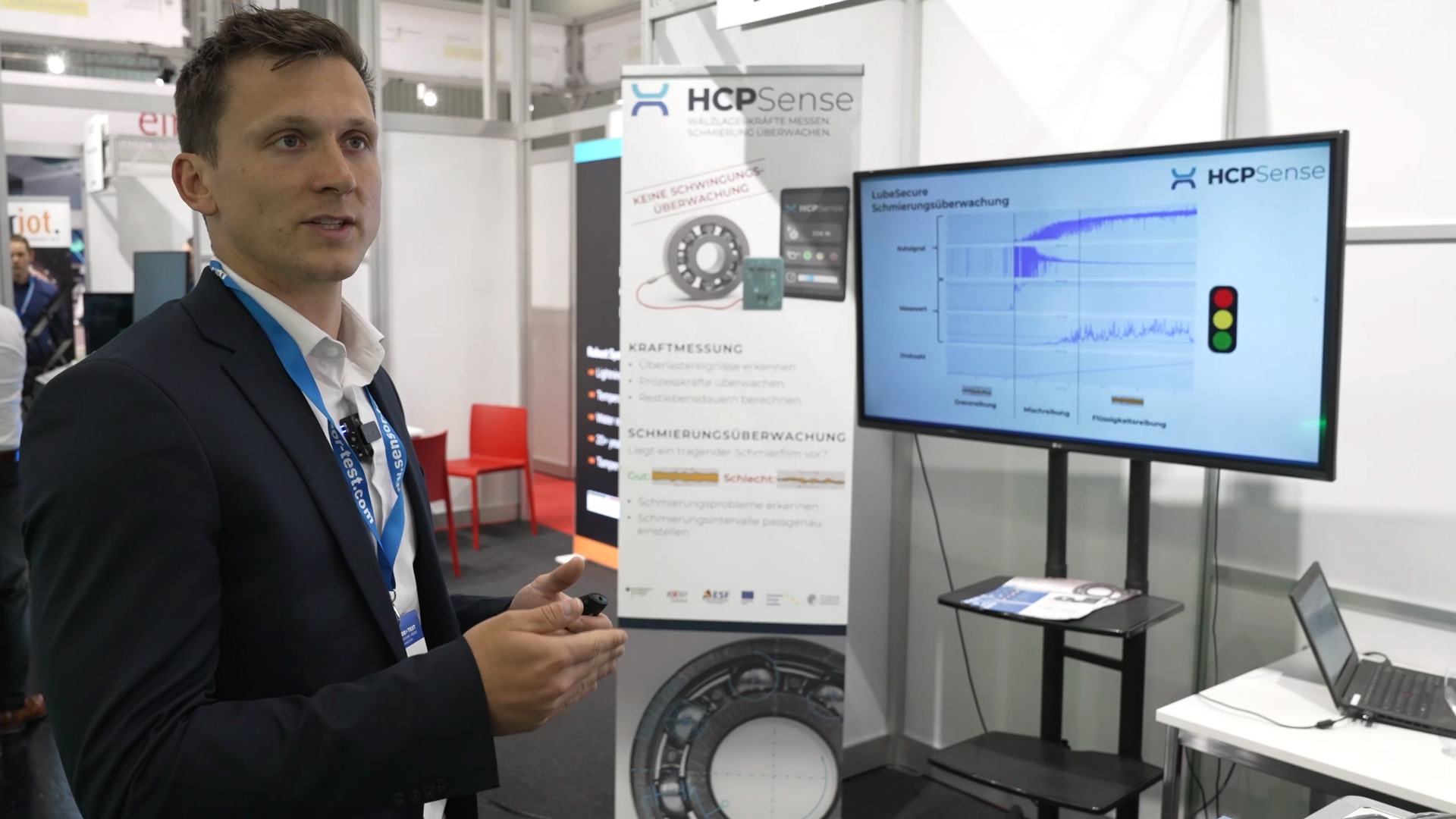
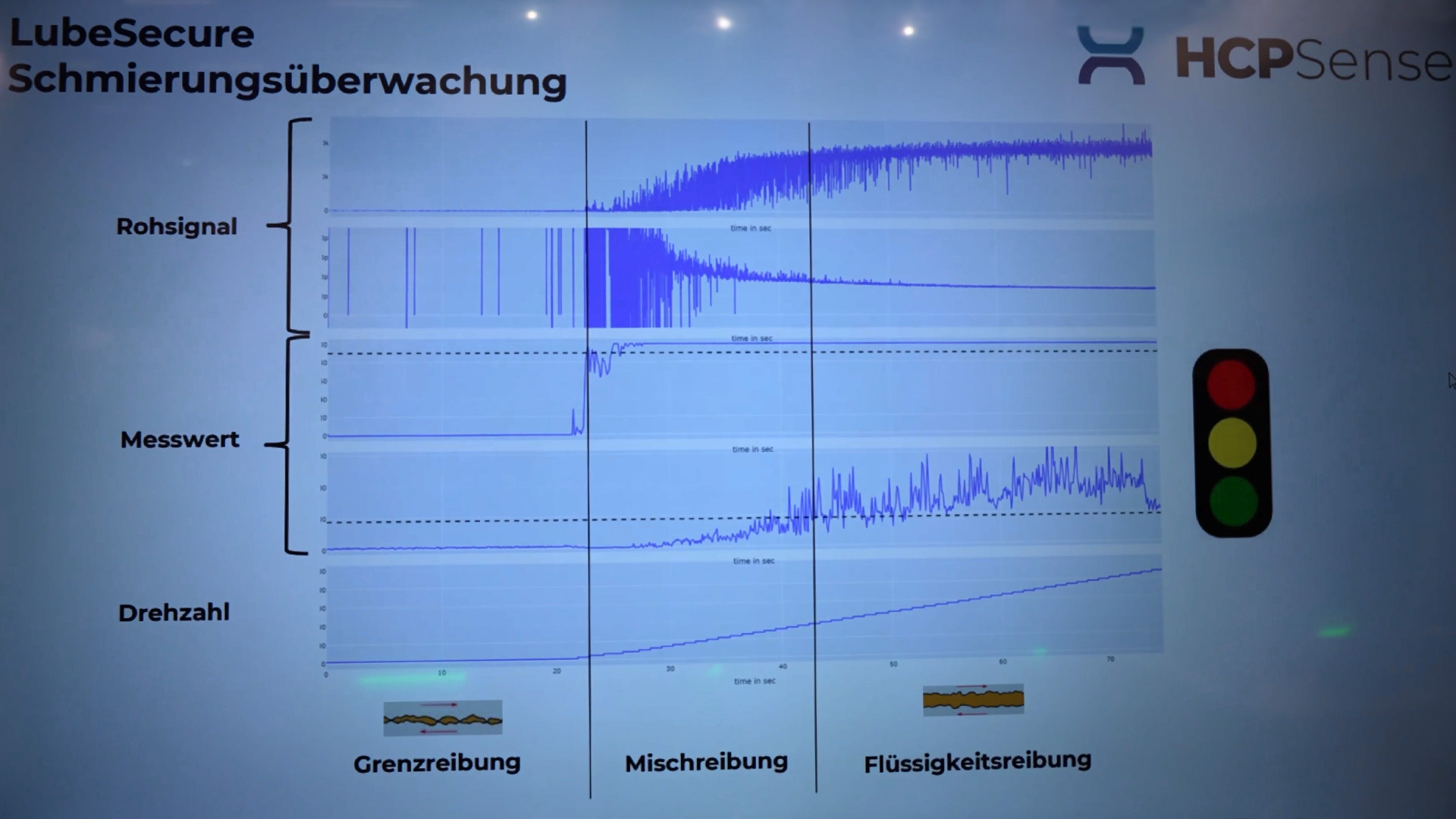
The system's functionality can be verified on the test bench. At the start – when the system is at a standstill – there is boundary friction and the measurement results are zero. Only as the speed increases does a stable lubricating film form. The system registers the transition from boundary friction to mixed friction and finally to fluid friction precisely and in real time. The aim is to control operation precisely at this optimum point, where the lubricating film is fully effective but no unnecessary resistance is generated. Excessive lubrication can also be problematic, as it not only increases lubricant consumption but also the machine's energy requirements.
The system opens up new possibilities, especially in long-life lubricated systems. Instead of replacing bearings across the board after a fixed number of operating hours – even though they are still functionally intact – the actual lubricant quality can be monitored over time. Changes due to aging, metal particles, or other contamination are detected at an early stage. In systems with automatic relubrication, the lubricant flow can be controlled precisely: relubrication only takes place when the measured values require it. This not only saves material, but also reduces the risk of overlubrication – a problem that is often underestimated in practice.
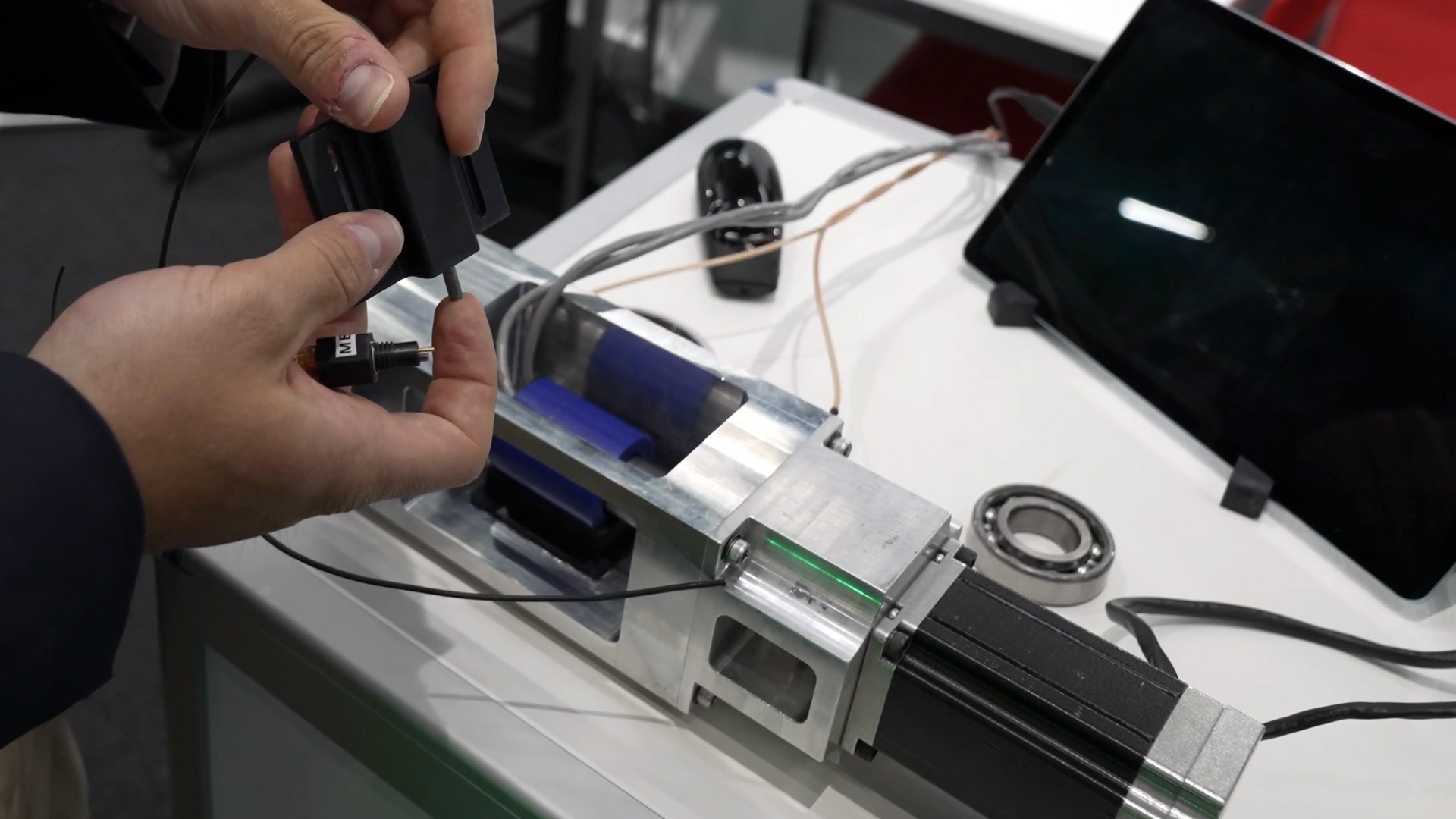
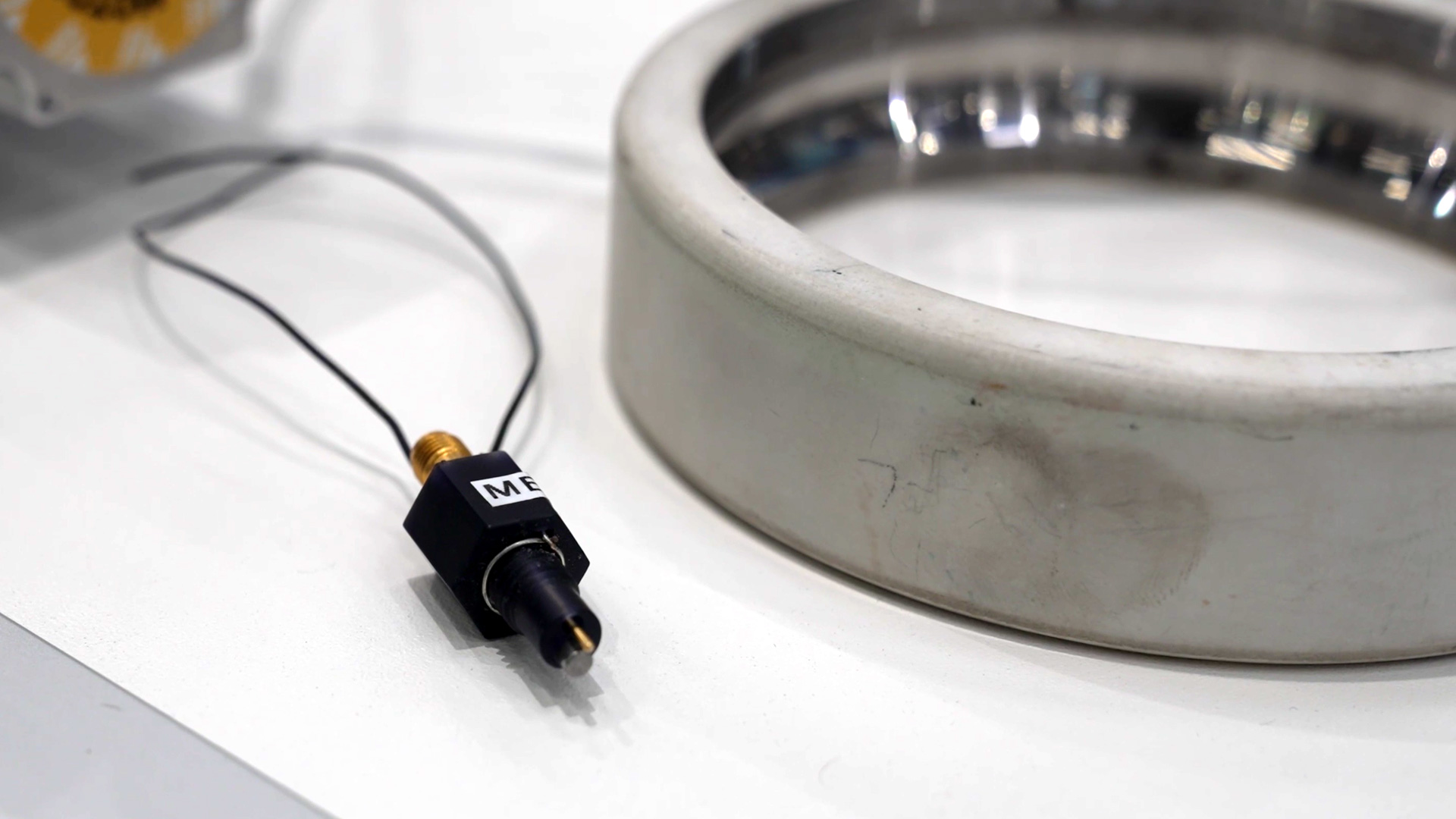
Energy savings can also be achieved. This is because the friction condition of a bearing directly influences the energy efficiency of a system. An excessive lubricating film acts as a resistance – comparable to trying to run through water. Precise control to achieve the optimum operating condition reduces energy consumption without increasing wear. The result: lower consumption, less waste heat, longer service life – and a better ecological balance.
The technical principle behind the system is not based on additional sensors, but on a simple electrical signal path through the bearing itself. The outer ring is contacted via a small bore, the shaft via a sliding contact. The signal flows between them – through the lubricating film. Depending on the thickness and condition of the film, the electrical resistance changes, allowing conclusions to be drawn about the friction condition. A separate evaluation unit analyzes the data, interprets it automatically, and provides the user with an easy-to-understand result – often in the form of a traffic light system with the statuses “good,” “medium,” or “poor.”
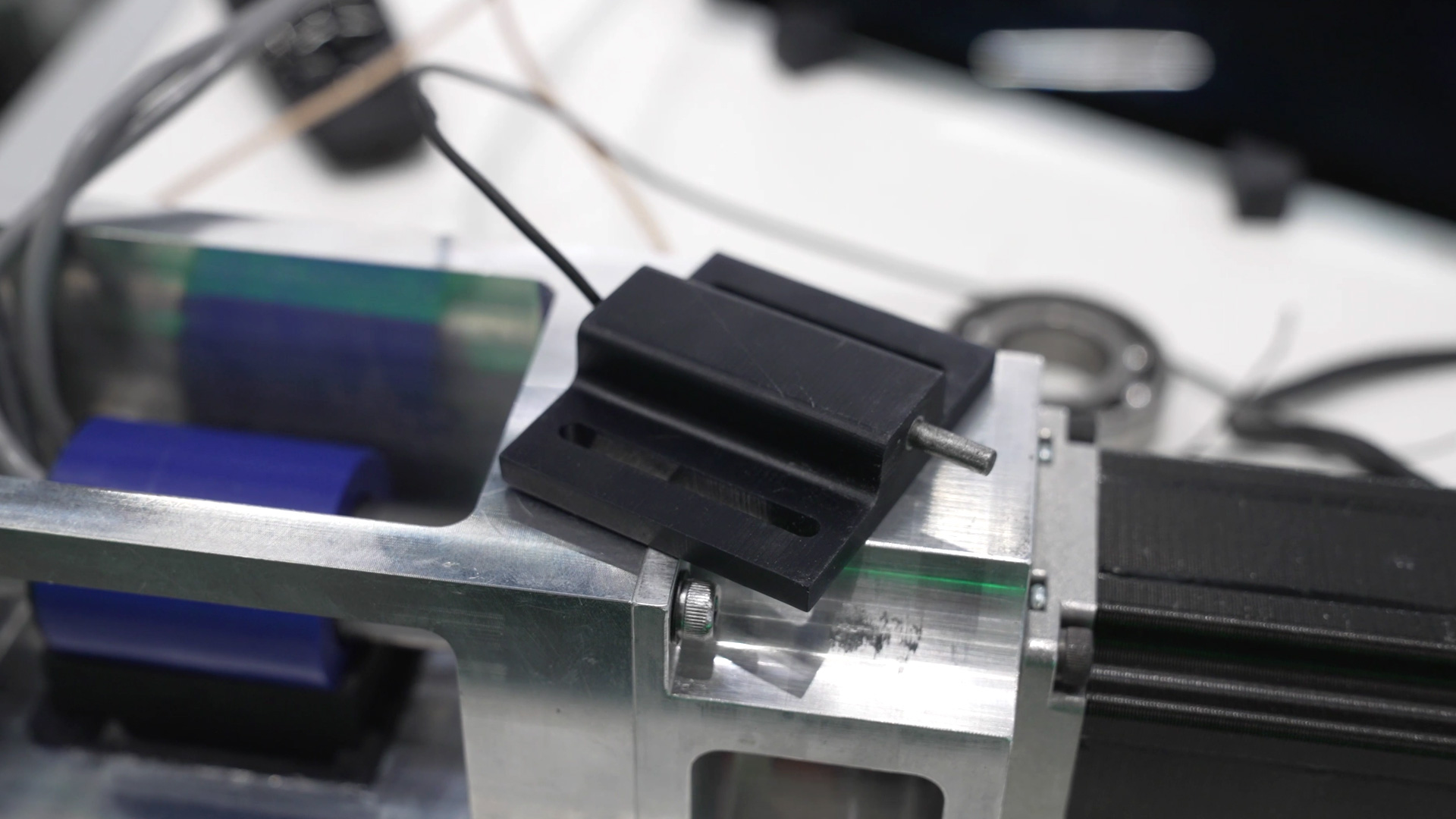
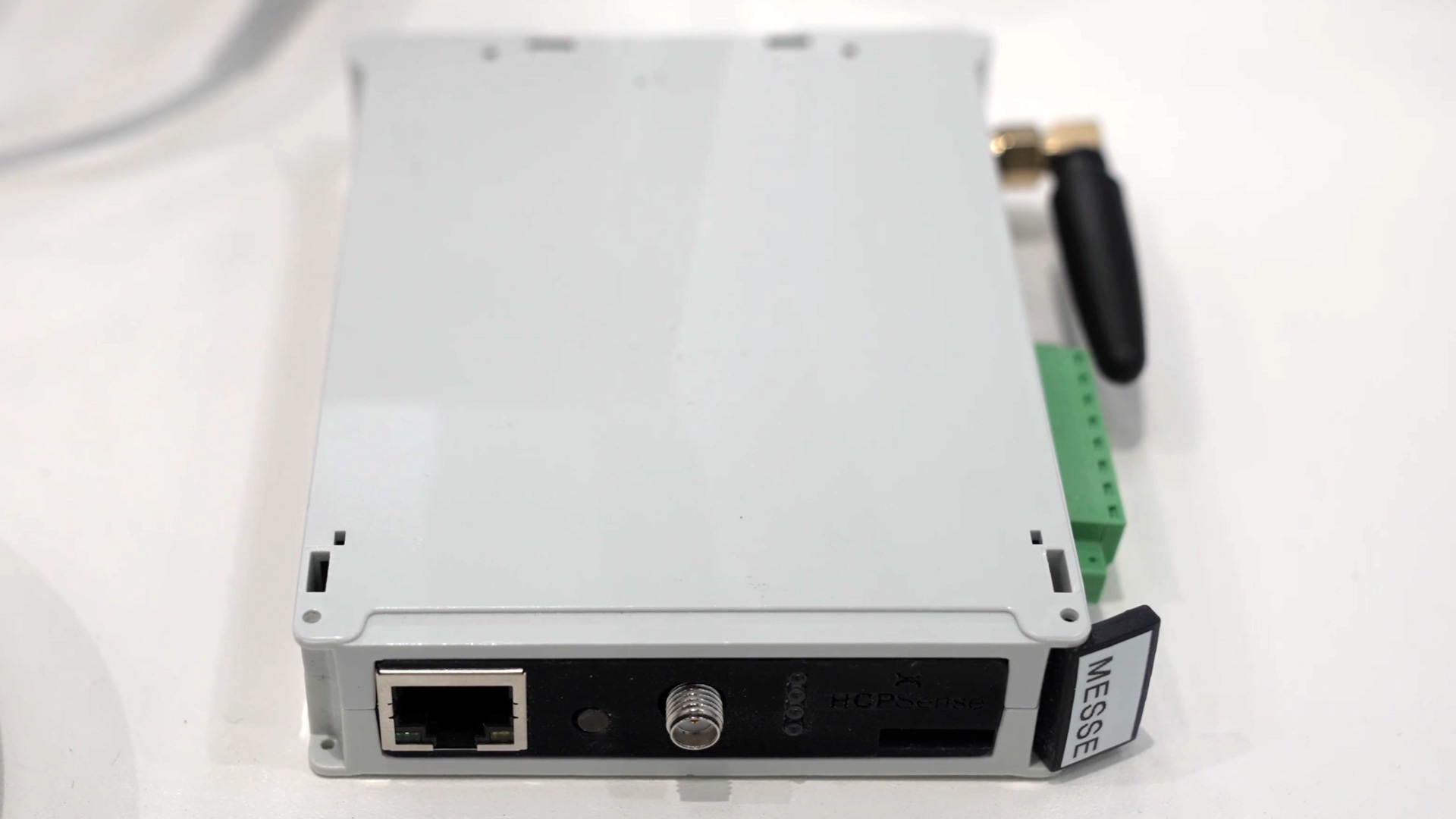
Integration into existing systems is straightforward. The data can be integrated directly into industrial control systems via Ethernet or sent wirelessly to a cloud via LTE. There it is available for more in-depth analysis, for example as part of predictive maintenance concepts. Raw data is only output when required; preprocessing is carried out as standard, enabling immediate use without the need for interpretation.
The process is suitable for a wide variety of bearing designs – from ball and cylindrical roller bearings to plain bearings and sliding seals. The only decisive factor is that two conductive components are separated by a lubricating film. The roots of the process lie in research into electrical damage to bearings in electric drives. The original question of how electrical currents damage bearings led to the idea of exploiting these effects in a targeted manner – below the damage threshold as a source of information about the condition of the lubrication.
The entire technology was developed entirely by HCP Sense itself – from the hardware and firmware to the evaluation algorithms. The process was developed from the doctoral theses of two founders who transferred their scientific expertise into a marketable product. Today, the system offers a practical solution for reliable bearing monitoring that not only prevents technical failures but also reduces resources, energy, and maintenance costs. An innovation that comes from the depths of research – and has an impact on everyday industrial life.